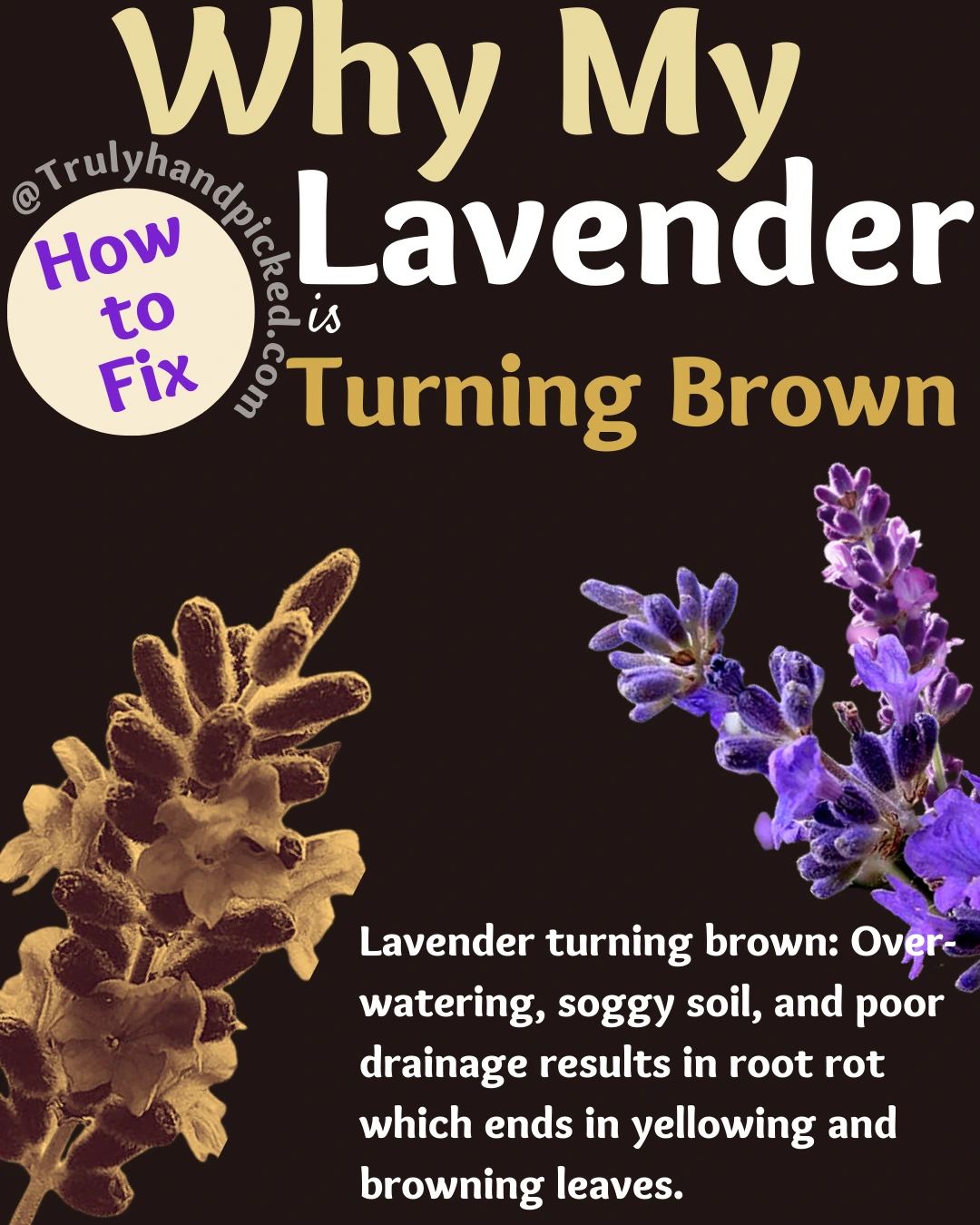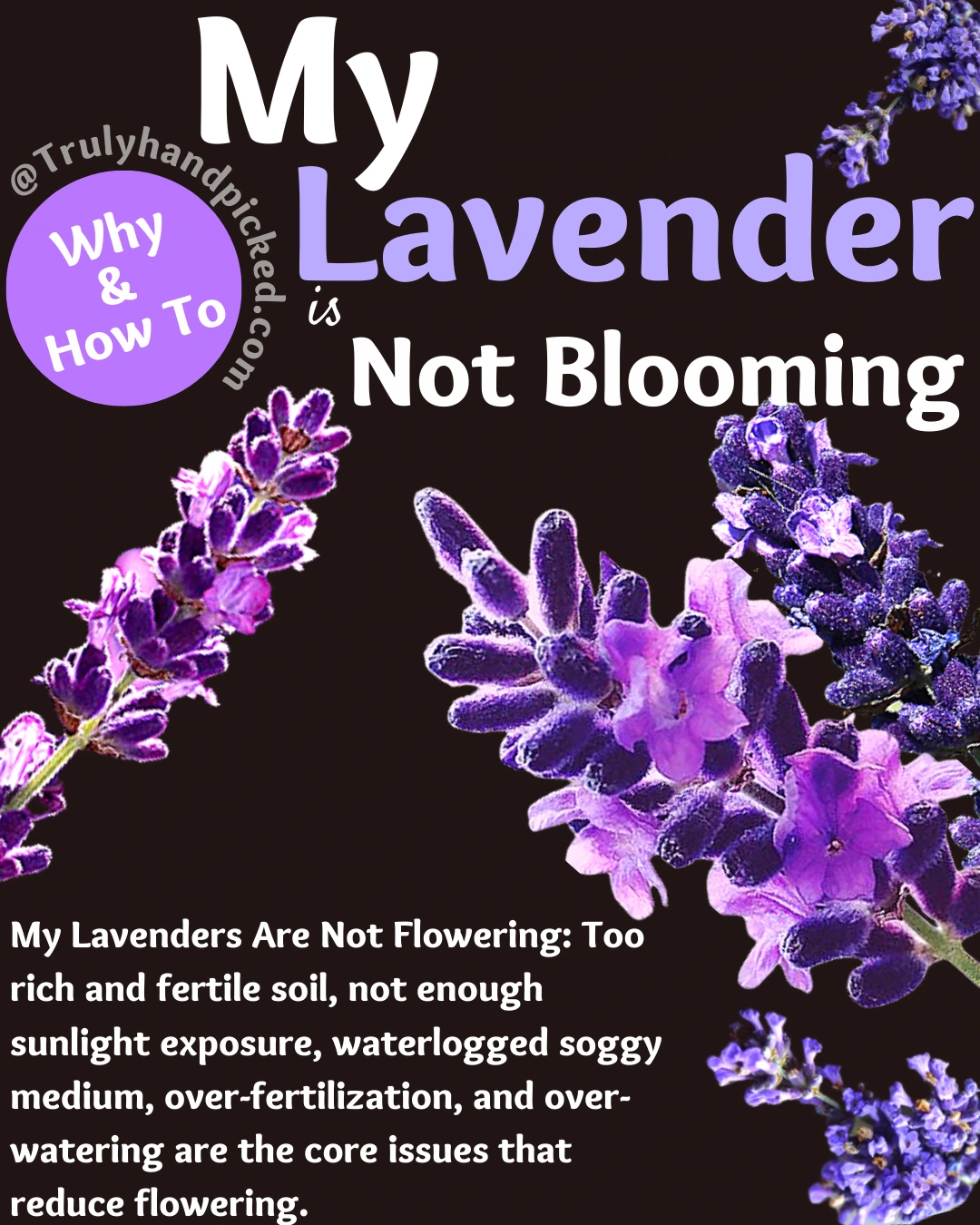Lavender is a must-have houseplant for every gardener, whether you have an herb garden or not. This supremely aromatic herb pauses a lovely fragrance that works as a natural anti-repellent component.
My Lavenders Are Not Flowering: Too rich and fertile soil, not enough sunlight exposure, waterlogged soggy medium, over-fertilization, and over-watering are the core issues that reduce flowering.
Lavender turning brown: Over-watering, soggy soil, and poor drainage results in root rot which ends in yellowing and brown lavender.
It contains plenty of therapeutic compounds in itself and thus, holds extreme curative value. Apart from its medical significance, the lavender plant is highly appreciated for its super-pretty glance.
But any kind of unhealthiness can interrupt their beautiful glance noticeably. Gradually, this kind of trouble becomes fatal for your plant and makes your growing lavender die all of a sudden.
Validate our discussion thoroughly to avoid such type of deadly issues expertly-
Why Is My Lavender Not Blooming?
The only reason for cultivating lavender in our garden is the beautiful and advantageous flowers. If you can’t have those highly fragrant and attractive blossoms, why will you waste your time and garden space on this herb? So, no matter what, we have to fight the issue and make our lavender plant bloom again, if it ever stops blooming! Here we state the most typical reasons why a growing lavender suddenly stops blooming along with their preferable curing methods-
Improper Soil:
Lavender prefers low-to moderately fertile soil to thrive well. If you sow your plant in highly dense or fertile soil with alkaline pH, it will stop producing flowers soon.
Inadequate Sunlight:
This aromatic herb is native to the regions of sun-drenched continents. Thus, if you can’t offer the lavender `plant adequate sunlight with full sun exposure, it will have problems along with irregular blooming issues.
Unsuitable Fertilization:
Feeding can not only enhance the growth of a plant, but sometimes, it can hamper the blooming capacity of a plant as well. Feeding your lavender plant with high nitrogen fertilizer or fertilizing it more than twice a year can decrease the flower production capacity in your plant effectively.
Poor Drainage:
Poor drainage not only turns your lavender plant brown but hampers its blooming capability as well. such a condition often initiates root rot in our plant and eventually ends up with wilting or dying form instead of making it bloom.
Water-logged Growing Medium:
This condition occurs due to watering your plant more than its requirement. Soggy condition not only appears due to poor drainage but sometimes to excess watering or heavy rainfall too. Such a state indicates you must water your plant repeatedly without letting the soil dry ever.
Overcrowded Plant:
Lavender plants always like large spaces to thrive and bloom naturally. If you keep your plant unpruned or allow it to suffocate under the debris of old foliage, it will never bloom normally. This lack of bloom form eventually turns into a no-blooming condition shortly.
Unsuitable Climate:
This aromatic herb is cold hardy but it can’t stand high in a humid or cool place for long. If you place your growing lavender plant in a spot with low light and high humidity, it will stop producing flowers soon and may die too within a couple of months.
How Keep Your Lavender Eternally Blooming?
To avoid such troubles and get the everlasting blooming form of your growing lavender plants, try these hacks responsively-
- Pick soil that is sandy or rocky with plenty of gravel and slightly acidic in pH level
- Water your plant thoroughly after the plantation and then every 4-5 days
- When your plant is established well, water it every 7 to 10 days with distilled water
- Place it in a room with plenty of direct sunlight for around 6-8 hours per day
- Keep the humidity level of the room lower than 40% with the perfect air circulation
- Make sure the excess water is draining well, every time you water it
- Check for the healthy root condition and be alert for any type of fungal or bacterial infestation
- Prune your plant twice in peak season, once it reaches a moderate height, and keep it safe from being overcrowded
- And deadhead the flower stalks from the tips before they start drying on the plant to encourage more blooming in your lavender plants.

Why Is My Lavender Turning Brown?
The Lavender plant produces tiny branches with fronds-like spreading leaves in the grey-green shade. This plant blooms with long flowering shoots in pure purplish stalks, which produce blooms in clusters.
But sometimes, the foliage or blossoms may lose their real color and turn into a parched brown shade. This condition occurs due to some common reasons, here we refer to the most typical ones along with their preferable solutions-
Poor Drainage System:
This means-
- You may use a potting mix that can’t drain well
- Your pot doesn’t have a properly-working drainage system
- Or you may use clay-based soil instead of rocky soil for the plantation
Solutions:
- Lavender belongs to a native place where dry air, high temperature, and limited rainfall are common
- You must provide such conditions to grow lavender uninterruptedly
- Using soil or potting mix amended with a high level of gravel or sand or perlite is ideal here
Watering Issue:
It indicates-
- You may overwater your growing lavenders or your plant may get overhydrated due to excessive rainfalls
- Your plant roots may start decaying due to soggy growing medium
- And your plant may get nutrient deficiency due to damaged roots which are unable to pass the nutrients adequately
Solutions:
- Never overwater your lavender plant ever
- Water your plant every 2-3 days after the replantation and once a week during the normal season
- Hold the watering schedule during the high humid conditions like winter and monsoon
Improper Humidity:
This problem indicates that-
- The air circulation process of the area where you put the pot is unsuitable
- You may place the plant in a spot with the highly humid or moisturized condition
- Or you may keep your lavender plant in a highly humid spot for several consecutive weeks
Solutions:
- Lavender is native to the Mediterranean areas with extremely dry air; thus, it can’t tolerate moisture for long
- Keep your plant in a spot with low-medium humidity with plenty of bright light
- Diminish the watering of your lavender plant when the humidity level ever goes higher for a single week
Untreated Diseases:
That indicates that-
- Your plant may suffer from some fungal or bacterial issues
- You may ignore the mild fungal or bacterial issues signs of your plant initially
- And probably you haven’t applied any effective fungicide or antibacterial solutions to your plant so far
Solutions:
- Always look for the mildest signs of a fungal or bacterial issue that your plant is trying to give you
- Never let your plant roots stay in the slightest unhealthy condition ever, as they are most contagious to disease
- And give your plant a good rinse of fungicide or antibacterial solutions once a few days to be on the safe side, as prevention is better than remedy.
Why Is My Lavender Turning Yellow?
Lavender plants sometimes turn yellow by losing their normal color. This is a prior form before it turns brown. So, you can say that lavender plants usually give us a final warning of deadly consequences through their yellowish form. You must get alerted and fix the issues which cause lavender to lose its natural color. The most common causes of this issue, are as follows-
- Fertilization with a high-nitrogen fertilizer
- Highly fertile soil
- Excessive watering
- Unhealthy roots
- Poor drainage
- Unsuitable climate
- High humidity
- And the wrong companion plant
To avoid the condition, you must provide your plant with limited watering and controlled fertilization along with enough light. Keep attentive to your plant and it will never disappoint you by turning yellow ever.
FAQ: Does Lavender Need Water Every Day?
No, Lavender never claims regular watering even during the scorching summer days. You can set the watering schedule depending on the weather or hydration of your growing lavenders. Watering once a week is enough.
What is the Best Time to Plant a Lavender?
The best time to plant lavender is somewhere between April to May or early to late spring. This time the soil just warmed up naturally and can give your plant a kickstart from the beginning.
